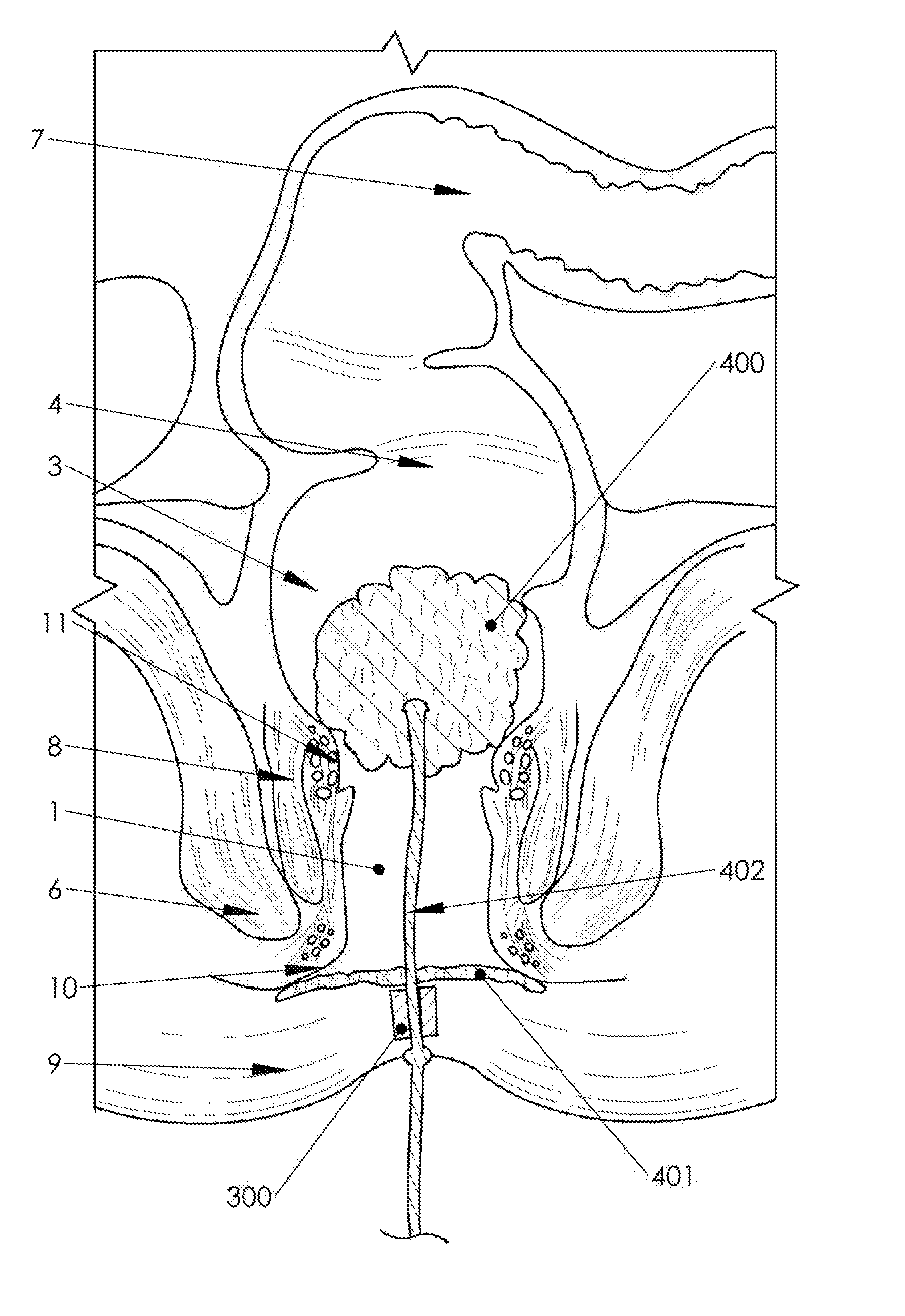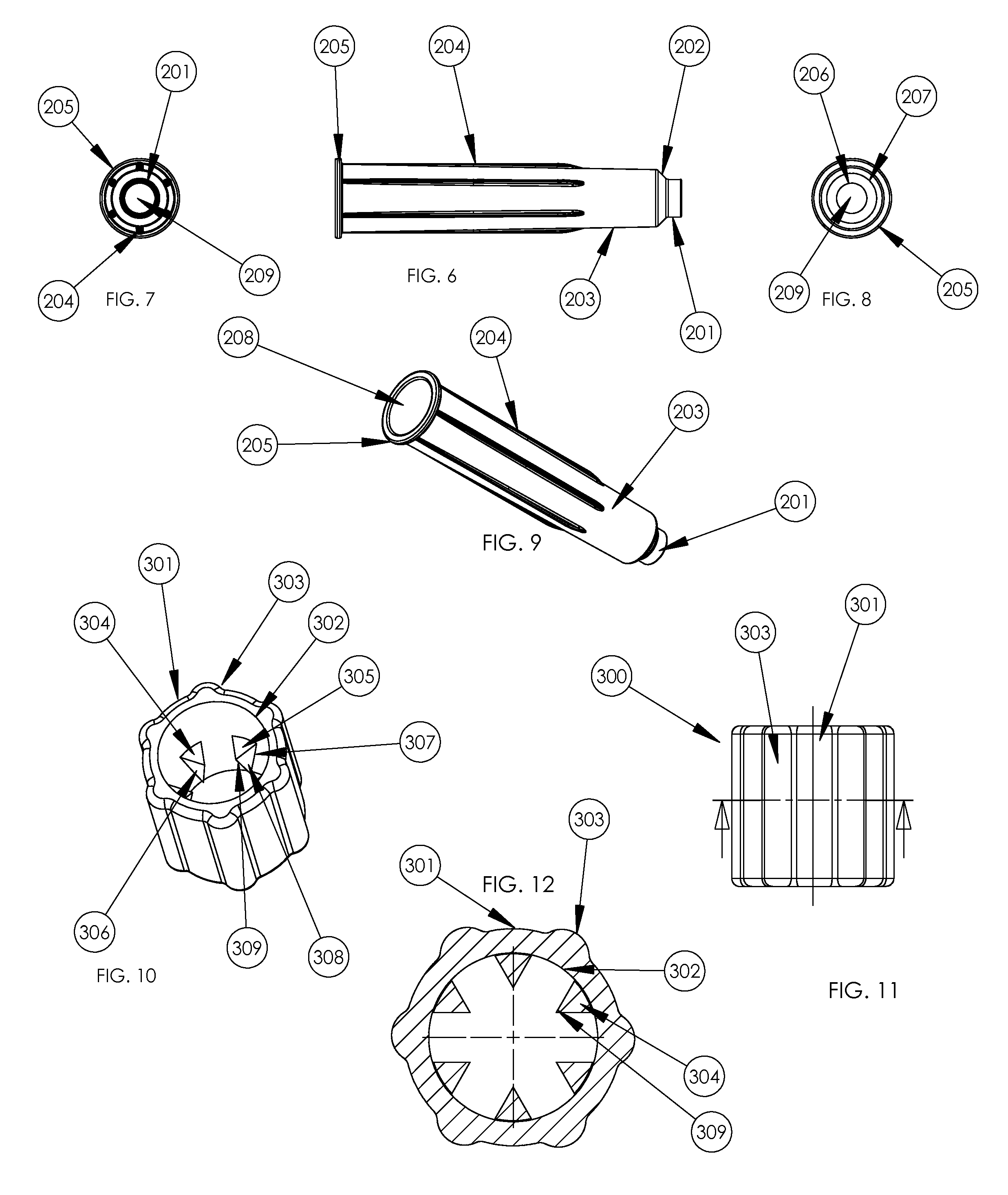Device and method to avert anal fecal leakage
a technology of anal fecal and fecal leakage, which is applied in the field of devices and methods to avert anal fecal leakage, can solve the problems of increased bulkiness, and inability to control the muscles that control the evacuation of feces
- Summary
- Abstract
- Description
- Claims
- Application Information
AI Technical Summary
Benefits of technology
Problems solved by technology
Method used
Image
Examples
Embodiment Construction
[0039]FIG. 1 shows the deployment shield and plunger in an exploded view. Shield 100 is consists of two principle regions; 1) deployment region 106 and 2) finger engagement area 101 which are separated by anus abutment 105. Abutment 105 has an anterior side 107 which has a slight reverse rake angle to accommodate a more comfortable fit into the intergluteal area and flush against the anus where the rearward side of stop 108 is generally perpendicular to the finger engagement area 101 to accommodate the flat distal side of the users fingers encompassing shield 100 and plunger 200 as the device is ready for insertion as seen in FIG. 14. It is critical that abutment 105 is located along shield 100 in a proper distance from the deployment ring 116 so that the device leakage inhibition means 400 (as shown in FIG. 16) is deployed into the anal cavity in the proper area, which is immediately superior to the interior anal sphincter and its set of muscular tissues in the anal canal. Deployme...
PUM
 Login to View More
Login to View More Abstract
Description
Claims
Application Information
 Login to View More
Login to View More - R&D
- Intellectual Property
- Life Sciences
- Materials
- Tech Scout
- Unparalleled Data Quality
- Higher Quality Content
- 60% Fewer Hallucinations
Browse by: Latest US Patents, China's latest patents, Technical Efficacy Thesaurus, Application Domain, Technology Topic, Popular Technical Reports.
© 2025 PatSnap. All rights reserved.Legal|Privacy policy|Modern Slavery Act Transparency Statement|Sitemap|About US| Contact US: help@patsnap.com



